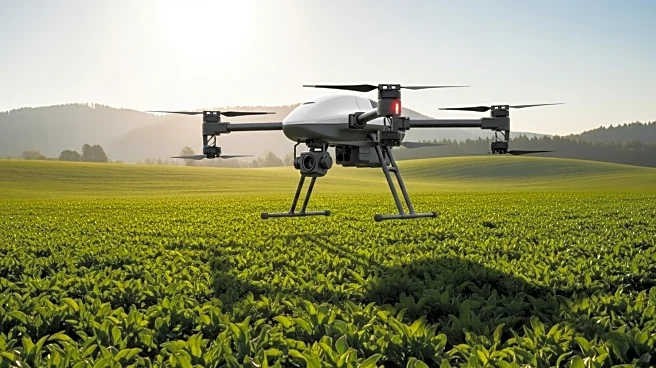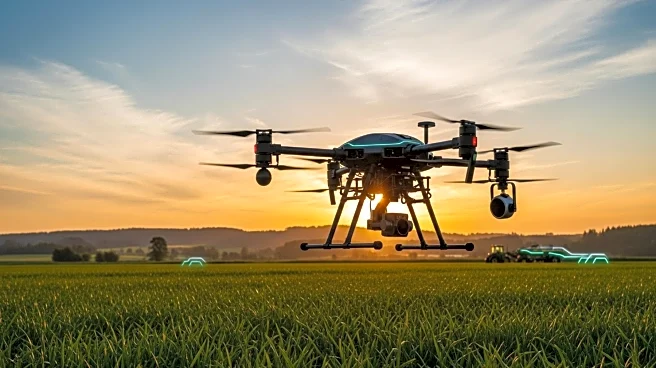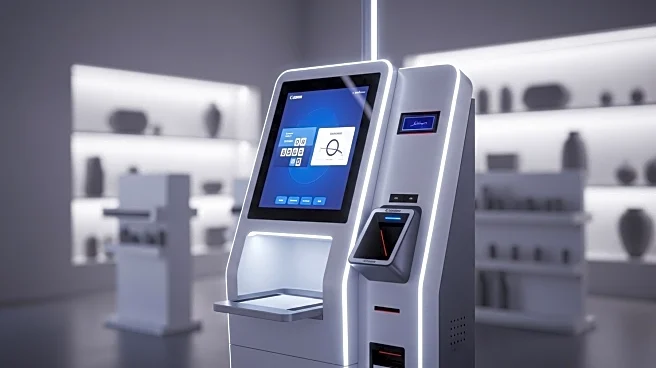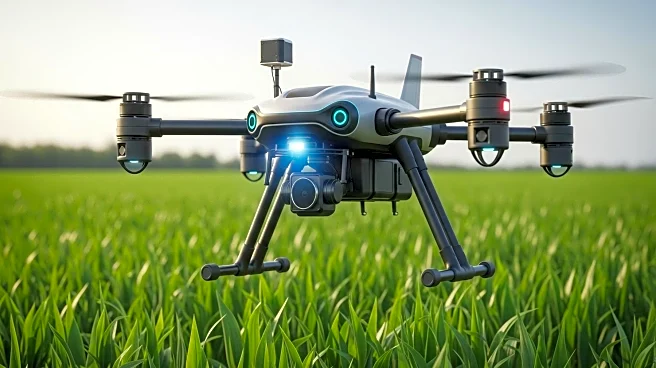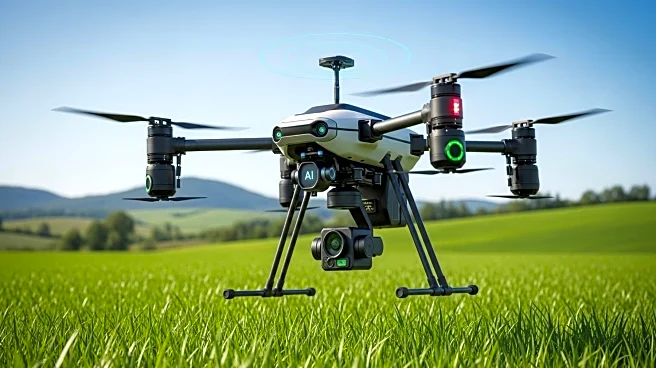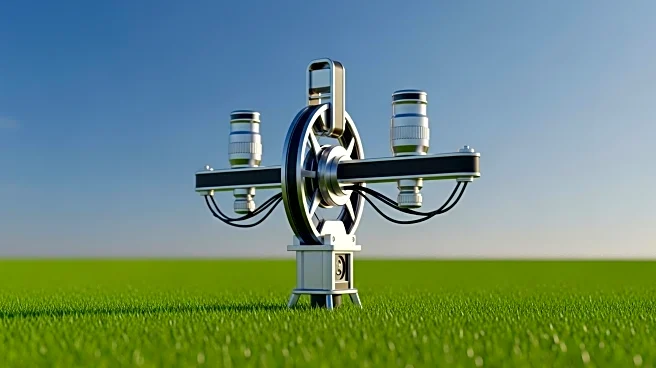What is the story about?
What's Happening?
The agriculture drones market is experiencing significant growth, projected to expand at a compound annual growth rate (CAGR) of 19% from 2025 to 2030. According to Mordor Intelligence, the market is expected to increase from USD 5 billion in 2025 to USD 13 billion by 2030. This growth is driven by regulatory reforms, large-scale deployments, and analytics-driven solutions. Medium-weight drones are becoming popular due to their longer flight times and higher payload capacity, which are ideal for covering large farmlands. The adoption of drones is further supported by government incentives and sustainability programs, which help farmers turn operational data into valuable insights and new revenue opportunities. Drones are increasingly used for precision farming, such as variable-rate spraying and multispectral monitoring, which boost yields while reducing input costs. The shift towards eco-friendly farming and traceable produce is accelerating drone adoption, enabling precise interventions that minimize environmental impact.
Why It's Important?
The expansion of the agriculture drones market is crucial for enhancing precision farming and sustainable agriculture practices. Drones offer significant advantages in optimizing the use of fertilizers, pesticides, and water, thereby improving efficiency and supporting sustainability goals. As consumers and regulators demand greater transparency, drones help farms deliver verifiable sustainability data, strengthening compliance and enhancing market reputation. The use of drones also addresses labor shortages by enabling autonomous operations, allowing a single operator to manage multiple units simultaneously. This reduces reliance on manual labor while improving consistency, safety, and scalability in agricultural operations. Additionally, drones play a key role in carbon measurement and verification, helping farmers turn sustainability practices into revenue opportunities through expanding carbon-credit markets.
What's Next?
The agriculture drones market is expected to continue its growth trajectory, with North America leading in drone adoption due to early regulatory clarity and well-established precision-farming infrastructure. Asia-Pacific is projected to witness the highest growth rate, driven by large-scale deployments and government programs supporting training and equipment access. Europe and South America are also seeing strong growth, fueled by streamlined approvals and initiatives promoting precision agriculture. As the market expands, strategic partnerships and integrated solutions are reshaping competitive advantages beyond hardware, with regional innovators customizing services to meet local crop types and language requirements.
Beyond the Headlines
The increasing adoption of drones in agriculture is likely to have deeper implications for the industry. As drones become essential tools for improving productivity and reducing environmental impact, they may also transform traditional farming practices and business models. The integration of advanced analytics and AI technologies with drone operations could lead to more efficient and data-driven farming methods, potentially reshaping the agricultural landscape. Furthermore, the role of drones in carbon measurement and verification could drive new revenue streams for farmers, linking sustainable practices directly with financial rewards.
AI Generated Content
Do you find this article useful?
